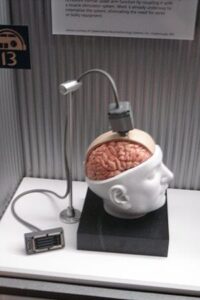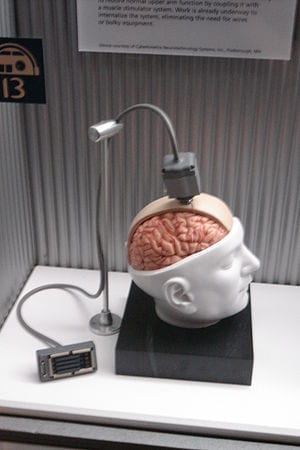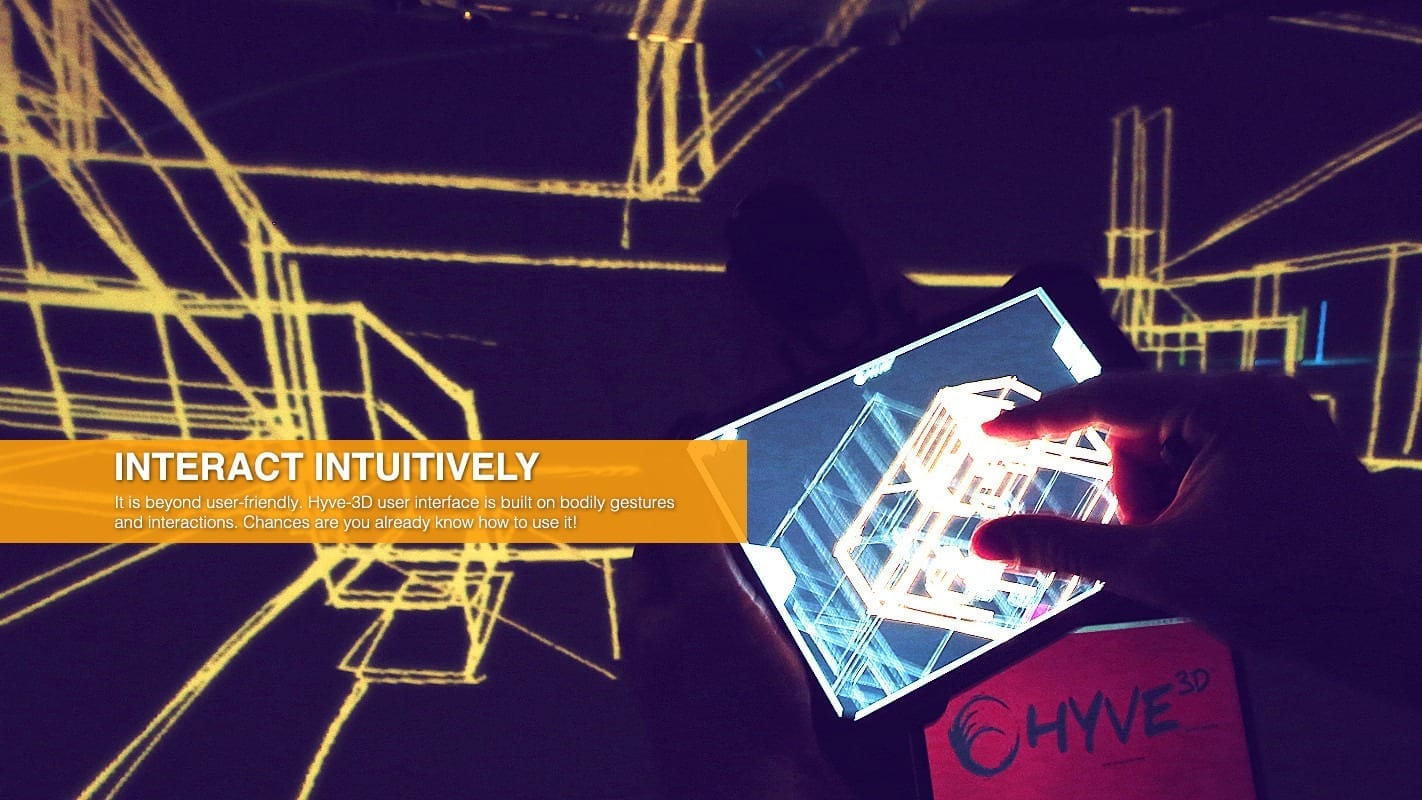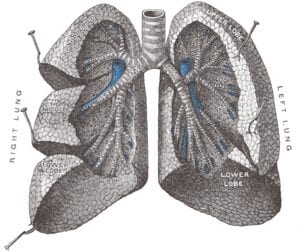
Scientists used brain-computer interface technology to help stroke survivors use their minds to power “virtual reality hands” to help regain the use of their arms and hands
“Virtual reality hands” — controlled by stroke survivors’ thoughts — could help them recover use of their hands and arms, according to a small study presented at the American Heart Association’s Scientific Sessions 2013.
“Using a brain-computer interface, we’ve created an environment where people who may be too physically impaired to move can practice mental imagery to help regain use of their arms and hands,” said Alexander Doud, M.S., lead author.
Brain-computer interface technology can help tell if patients are activating regions of their brains in ways that have been linked to better recovery.
“During rehabilitation, usually a therapist will move the patient’s hand or arm in the desired direction while asking that patient to imagine they are making the movement,” said Doud, who was a Masters student at the University of Minnesota in Minneapolis when the study was conducted. “In this practice space, the patients can control photorealistic hands by thinking about using their own hands without actually moving at all.”
The researchers tested the virtual system on six stroke survivors who suffered impaired arm and hand movement. The patients viewed the stimulus using 3-D glasses to produce the illusion that they were seeing their own arms.
Patients achieved as high as 81 percent accuracy when using the virtual hands to reach out to a glass of tea or water. They improved their skills in as little as three, two-hour experimental sessions.
“The system is created in a way that could allow it to be used to practice a wide variety of desired activities, such as picking up a toothbrush or opening a jar, with very little additional work to set up the system,” Doud said. “This can make it even more patient specific and that leads to patient motivation.”
The Latest Google Headlines on:
Virtual reality
[google_news title=”” keyword=”virtual reality” num_posts=”10″ blurb_length=”0″ show_thumb=”left”]
The Latest Bing News on:
Virtual reality
- Mice navigating a virtual reality environment reveal that walls, not floors, define spaceon May 2, 2024 at 12:29 pm
"Our findings provide a significant step forward in understanding the precise nature of the sensory information that animals used for boundary detection," says Dr. Chen. "They not only highlight the ...
- Virtual reality could revolutionize mental-health treatments, including ketamine therapy, for conditions like depression and anxietyon May 2, 2024 at 7:25 am
Here's how virtual reality is transforming mental-health treatments such as ketamine therapy for conditions like depression, PTSD, and body dysmorphia.
- Virtual reality: A promising tool for teen stress reductionon May 1, 2024 at 5:00 pm
In response to this crisis, University of Washington researchers studied whether virtual reality might help reduce stress for teens and boost mental health. Working with adolescents, the team designed ...
- Virtual reality could help treat eating disorders, Louisville researchers sayon May 1, 2024 at 1:05 pm
Kentucky researchers are developing and expanding a virtual reality treatment for eating disorders using a $125,000 grant from the National Eating Disorders Association, the University of Louisville ...
- Virtual reality environment for teens may offer an accessible, affordable way to reduce stresson April 30, 2024 at 5:00 pm
Working with teens, UW researchers designed RESeT: a snowy virtual world with six activities intended to improve mood. In a 3-week study of 44 teens, researchers found that most of the teens used the ...
- Shhh! 3 Secret Virtual Reality Stocks Flying Below Wall Street’s Radaron April 30, 2024 at 3:35 am
InvestorPlace - Stock Market News, Stock Advice & Trading Tips Thanks to weaker-than-expected forecasts, top virtual reality (VR) stocks ...
- Researchers develop a new way to instruct dance in Virtual Realityon April 29, 2024 at 3:22 pm
Virtual reality dance made easier with crowd wave technique. Open source code can be downloaded for Quest 2 and 3.
- Virtual Reality and Biofeedback Training Appear Effective for DMD, BMD Rehabilitationon April 29, 2024 at 11:57 am
A recent study suggests virtual reality and biofeedback training may be feasible and effective for patients with Duchenne muscular dystrophy (DMD) and Becker muscular dystrophy (BMD).
- How Virtual Reality Fits Into Blended Learning At Workon April 29, 2024 at 11:54 am
“Blended learning” refers to a combination of digital and in-person instruction. Typically, the digital element takes place online via 2D videos. While 2D videos work well in certain cases, they can ...
- Virtual Reality Newson April 28, 2024 at 5:00 pm
Bringing Together Real-World Sensors and VR to Improve Building Maintenance Jan. 31, 2024 — A new system that brings together real-world sensing and virtual reality would make it easier for ...
The Latest Google Headlines on:
Virtual reality hands
[google_news title=”” keyword=”Virtual reality hands” num_posts=”10″ blurb_length=”0″ show_thumb=”left”]
The Latest Bing News on:
Virtual reality hands
- Virtual Reality boosts animal welfare training in Vietnam and Indonesiaon May 2, 2024 at 1:35 am
The livestock export industry has introduced a virtual reality (VR) training tool as the latest innovation in its support for animal welfare training in Indonesian and Vietnamese abattoirs...Read More ...
- UbiSim Virtual Reality EdTech Platform Enhanced with New Therapeutic Communication Scenarios for Nurse Learnerson April 30, 2024 at 5:00 am
UbiSim ( the world’s first immersive virtual reality (VR) training platform built specifically for nurses and nursing simulation by Labster ( now includes more opportunities for practicing sensitive ...
- Experience The Evolution Of Earth On This Breathtaking Virtual Reality Expeditionon April 30, 2024 at 3:12 am
Virtual reality experience Life Chronicles is coming to London. Travel back billions of years and witness the epic evolution of earth.
- Researchers develop a new way to instruct dance in Virtual Realityon April 29, 2024 at 3:22 pm
Virtual reality dance made easier with crowd wave technique. Open source code can be downloaded for Quest 2 and 3.
- How Virtual Reality Fits Into Blended Learning At Workon April 29, 2024 at 11:54 am
“Blended learning” refers to a combination of digital and in-person instruction. Typically, the digital element takes place online via 2D videos. While 2D videos work well in certain cases, they can ...
- Friday 5: Virtual field tripson April 26, 2024 at 3:00 am
Virtual field trips can often help make tough concepts more engaging and easier to understand for students of all ages.
- Meta's Horizon OS is trying to usher in a new era of VR by luring third-party hardware makerson April 22, 2024 at 10:21 pm
Meta is opening its operating system to third-party brands to expand the future of VR hardware, making it easier for brands to enter the market. Hardware manufacturers will gain access to Meta's ...
- Central Arkansas Build My Future event: A hands-on exploration of construction careerson April 18, 2024 at 1:29 am
CONWAY (KATV) — The first Central Arkansas Build My Future event will be held at the Conway Expo Center Thursday, April 18 from 8 a.m. to 2 p.m. It is a hands-on event by the Associated Builders ...
- I tried 5 virtual-reality workouts. The best ones transported me around the globe and got me to exercise for way longer.on April 12, 2024 at 7:21 am
With virtual-reality (VR) technology and devices like ... During one workout, the controllers in my hands became baseball bats, and I was instructed to swing at VR targets approaching me.
- Apple Vision Proon February 2, 2024 at 10:57 am
For a virtual reality experience ... keeping track of your hand and eye movements. Optic ID, which scans your iris with infrared lights and cameras, is used for authentication.











